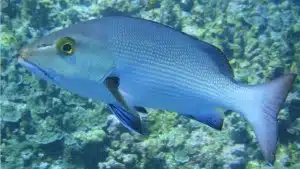World first research, at The University of Western Australia’s Oceans Institute, reveals that tropical snapper in the Pilbara and Kimberley coasts grow faster during warmer La Niña conditions.
By reconstructing historical patterns of fish growth, PhD student Joyce Ong is discovering how climate change, in particular warming oceans, will effect fish populations in the future.
“Fish ear stones have growth rings that are very similar to the growth rings of a tree,” explains Joyce. “Using historic collections of mangrove jack snapper, we have calculated an average growth rate from 1975 to 2003.”
Popular for recreational fishing, not to mention eating, the Mangrove Jack along with other fish in this region will provide a substantial food supply for future generations.
“My research shows that snapper growth rates have responded positively to warmer oceans in the past,” reveals Joyce.
“A greater understanding of the historical impacts of changing ocean temperature will help us to better predict and manage similar climate change impacts in the future.”
Joyce presented her research at Fresh Science WA 2015. Fresh Science is a national program that helps early-career researchers find and share their stories of discovery. Over 20 early-career researchers nominated for Fresh Science WA, which was held at the Western Australian Museum (training) and the Brisbane Hotel (public challenge event) and was supported by the Western Australian Museum, Curtin University, Edith Cowan University, Murdoch University, the University of Western Australia and the University of Notre Dame, Australia.
Contact: Joyce Ong, Australian Institute of Marine Science, The UWA Oceans Institute, joyce.ong@research.uwa.edu.au





 Fresh Science is on hold for 2022. We will be back in 2023.
Fresh Science is on hold for 2022. We will be back in 2023.